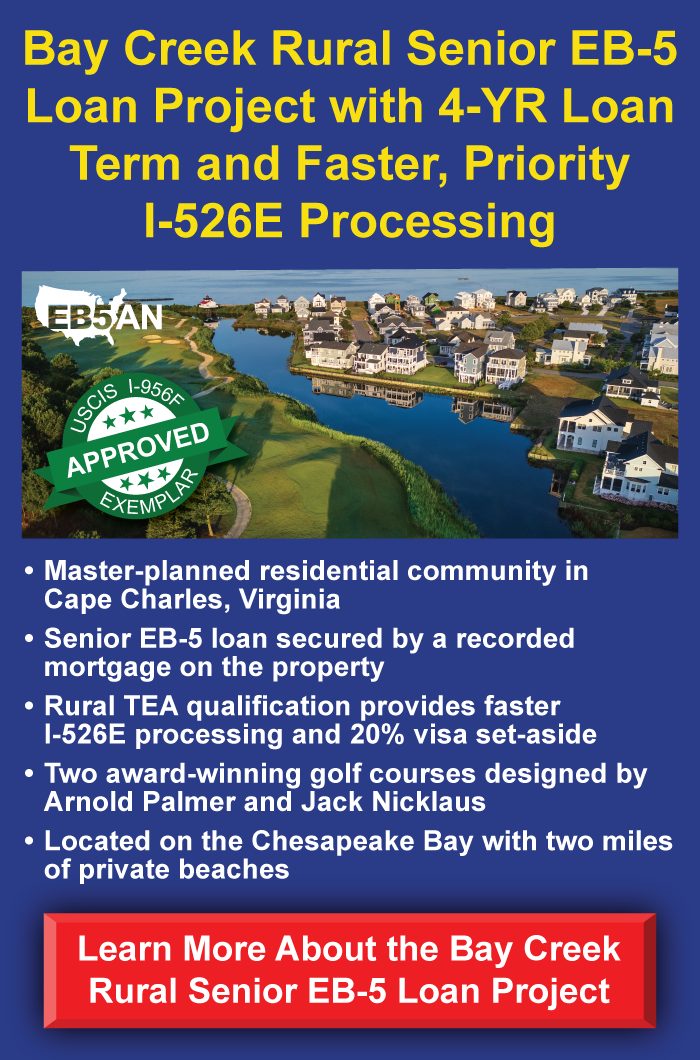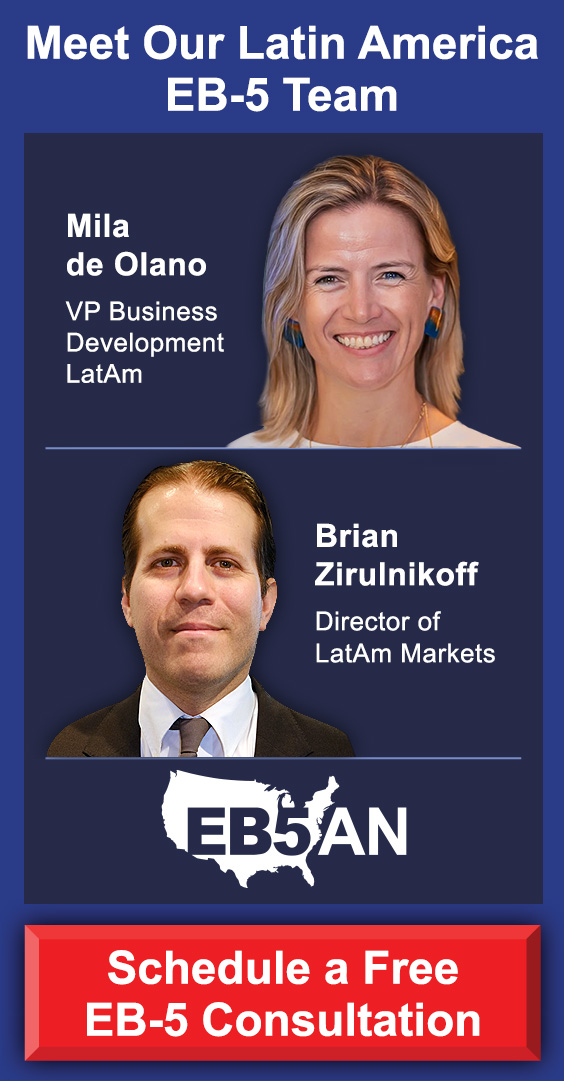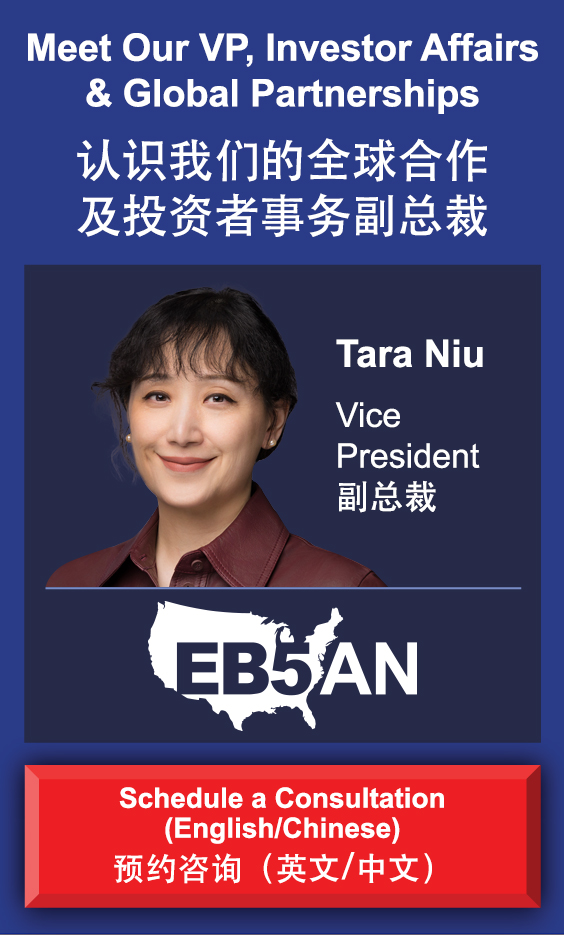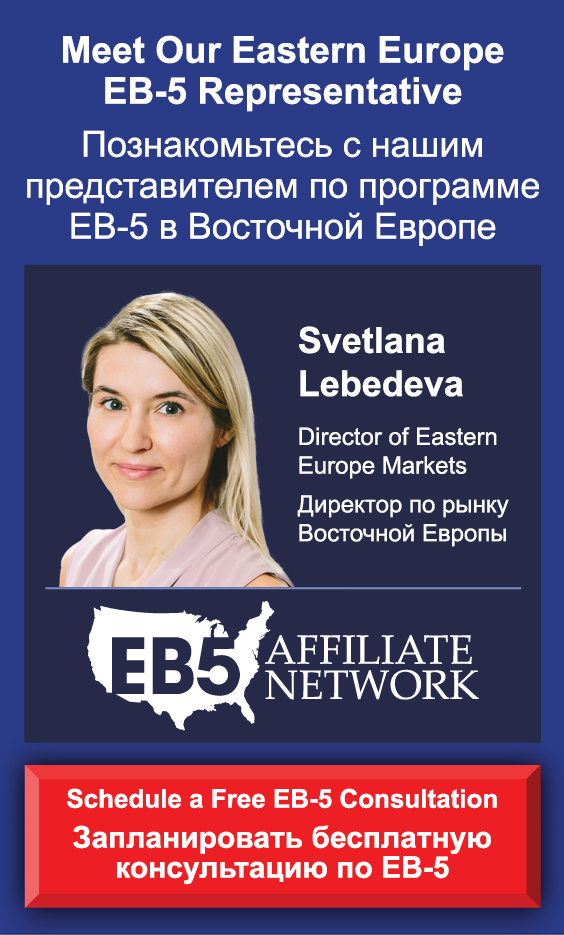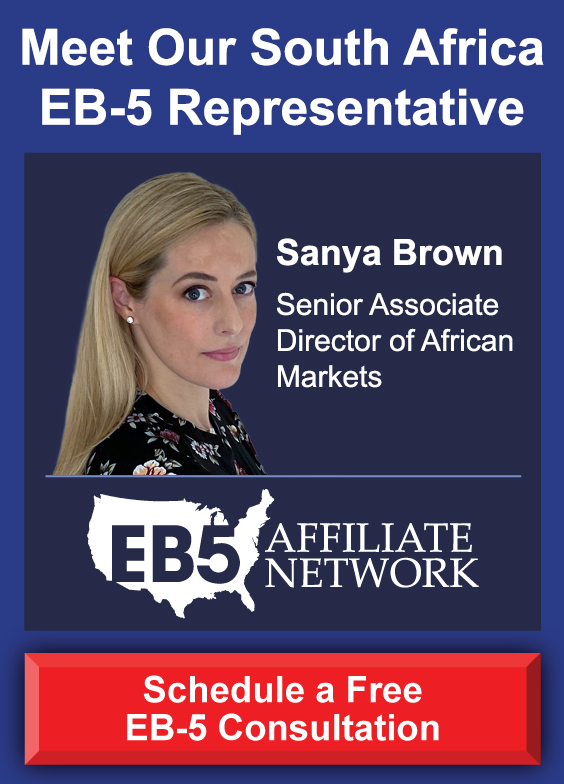The H-1B visa has long been a fairly common visa type for foreign nationals looking to work and live in the United States.
However, these are tough and uncertain times for H-1B visa applicants and holders.
The H-1B-heavy tech industry has seen mass firings. Thousands of laid-off H-1B visa workers have had to seek employment and receive job offers fast or risk losing their legal status. Immigration policies continue to change. Many foreign professionals in the United States seek alternative pathways to avoid being deported.
Fortunately, strong alternatives to H-1B—like the EB-5 Immigrant Investor Program—exist. They provide visas to foreign nationals who want to remain in the United States.
In this article, we’ll explore the top 10 available H-1B visa alternatives that will allow foreign nationals to live and work in the United States. We’ll also explain how partnering with EB5AN’s expert team can make this easier.
The Best H-1B Alternatives
Why There Is Greater Competition for H-1B Visas
The Top 10 H1B Alternatives
Invest in EB-5 Projects With EB5AN
The Best H-1B Alternatives
Here is a comparative summary of the main alternatives to an H-1B visa for foreign nationals who want to stay in the United States. This is a broad overview, and each case will vary.
| Visa / Status | Immigrant or Non-immigrant | Best suited for / key features & limits |
| L-1 (Intracompany transferee) | Non-immigrant (but allows “dual intent”) | Employees of multinational companies who’ve worked abroad ≥ 1 year and are being transferred to U.S. affiliate in a managerial/executive (L-1A) or specialized knowledge (L-1B) role. |
| TN (USMCA / NAFTA professionals) | Non-immigrant | For Canadian and Mexican citizens working in designated professional occupations, with a U.S. job offer. Usually for 3-year increments; must show temporary intent (no dual intent). |
| E-3 (Australian specialty occupation) | Non-immigrant (not strictly dual intent) | Australian citizens with job offers in specialty occupations (similar to H-1B). Spouses can work. 10,500 annual cap. |
| O-1 (Extraordinary ability) | Non-immigrant (but often treated as dual intent) | Individuals with demonstrated extraordinary ability in sciences, arts, business, athletics, etc. Good option when H-1B caps are unavailable. |
| EB-1 (Employment-based first preference) | Immigrant | Permanent residency (Green Card) category for “priority workers” (extraordinary ability, outstanding researchers, multinational executives). |
| EB-2 (Employment-based second preference) | Immigrant | Green Card category for professionals with advanced degrees (or equivalent) or exceptional ability; employer-sponsored (unless National Interest Waiver). |
| F-1 (Student visa) | Non-immigrant | Foreign nationals enrolling full-time in academic or language programs. Must maintain non-immigrant intent (i.e. show ties abroad). |
| H-1B1 (Chile / Singapore specialty worker) | Non-immigrant | Variant of H-1B for citizens of Chile and Singapore under free trade agreements. Specialty occupation. |
| E-2 (Treaty investor) | Non-immigrant | Nationals of treaty countries investing a “substantial” amount in a U.S. business. Must direct and develop the enterprise. Renewable indefinitely. |
| EB-5 (Immigrant investor) | Immigrant | Green Card via investment. Investor must invest in U.S. enterprise (threshold capital, job creation) and satisfy various conditions. |
We’ll take a closer look at each of these visa types below.
Why There Is Greater Competition for H-1B Visas
The H-1B visa process has changed significantly in recent years and further changes are planned. A major set of changes took effect under the H-1B Modernization Rule, which became effective January 17, 2025.
These are the main areas of recent and planned reform that will affect applicants and employers who sponsor foreign workers under the H-1B program.
Beneficiary-Centric Lottery: For FY 2025 and thereafter, United States Citizenship and Immigration Services (USCIS) will enter each individual applicant into the H-1B visa lottery only once, regardless of how many employer registrations are submitted for that person. If a beneficiary is selected, all employers who registered that beneficiary will be eligible to file. This replaces the old system, which allowed multiple entries per person.
Proposed Wage-Based Lottery: A major proposed change would replace the random lottery system with a system that prioritizes H-1B visas for applicants who have been offered higher wages.
Stricter “Specialty Occupation” Rules: The definition of what constitutes a “specialty occupation” has been clarified, requiring a more direct and logical connection between a job’s duties and an applicant’s academic degree. The duties and requirements at the third-party location must themselves satisfy the specialty occupation criteria—the focus is on the actual job at the client location, not just on what the petitioner states. The specialty occupation standard is being more tightly interpreted and enforced.
Increased Scrutiny on Third-Party Placements: There are new, stricter requirements for employers who place H-1B workers at third-party client sites, with increased oversight and documentation needed. USCIS can request contracts, work orders, or similar evidence to validate third-party arrangements and verify that the assignment is bona fide.
Expanded Authority for Site Visits: Immigration authorities now have expanded authority to conduct site visits, including at third-party worksites and remote locations such as an employee’s home. A failure or refusal to cooperate may lead to denial or revocation of visa petitions. If a site visit reveals inconsistency, or USCIS cannot verify essential facts, then the petition may be denied or revoked (after notice and opportunity to rebut in many cases).
IRS Data Sharing: There is increased data sharing between the IRS and immigration authorities, leading to more scrutiny of visa holders’ tax returns to identify potential unauthorized employment.
New $100,000 H-1B Fee: Beginning September 21, 2025, employers filing new H-1B petitions must include a $100,000 supplemental fee with each submission. This major change, introduced under the H-1B Modernization Rule, is intended to discourage excessive registrations and fund improvements to the visa system. The fee applies to both cap-subject and cap-exempt filings and is paid in addition to existing USCIS filing and fraud-prevention fees.
Other Integrity/Compliance Measures: USCIS may also deny or revoke petitions based on invalid registrations (e.g., declined/disputed fees) or false attestations.
The Top 10 H1B Alternatives
Visas for Skilled Professionals
L-1 Visa
The L-1 visa (Intracompany Transferee) is a non-immigrant employment visa that allows multinational companies to transfer employees from a foreign office to a U.S. office. The L visa has two subcategories: L-1A and L-1B.
These are the main features of each.
L-1A (Executives & Managers)
- For executives or managers of a qualifying international company.
- The U.S. employer must have a qualifying relationship (parent, subsidiary, affiliate, or branch) with the foreign company, with both conducting business.
- The employee must have worked abroad for at least one continuous year within the three years prior to application in a managerial, executive, or relevant role.
- The nature of the role offered in the United States must be managerial or executive.
- Period of stay: initially up to three years (or one year for new offices), renewable for up to seven years total.
L-1B (Specialized Knowledge Employees)
- For executives or managers of a qualifying international company.
- The U.S. employer must have a qualifying relationship (parent, subsidiary, affiliate, or branch) with the foreign company, with both conducting business.
- The employee must have worked abroad for at least one continuous year within the three years prior to application in a managerial, executive, or relevant role.
- The nature of the role offered in the United States must be managerial or executive.
- Period of stay: initially up to three years (or one year for new offices), renewable for up to seven years total.
TN Visa
The TN (Treaty National) visa is available exclusively to Canadian and Mexican citizens working in specific professions listed under the United States-Mexico-Canada Agreement (USMCA). It is a popular, cap exempt employer alternative for a variety of roles.
Who It’s For
- The TN visa is a temporary (non-immigrant) work visa for citizens of Canada or Mexico who will work in the United States in a qualifying “professional” occupation (e.g. engineers, accountants, scientists, teachers, lawyers).
- The position must be “prearranged”. You can’t just come to the United States and then find work.
- Self-employment under TN is not permitted.
Main Requirements and Features
- Citizenship: To be approved, an applicant must be a citizen of Canada or Mexico.
- Qualifying profession: The job must be on the list of eligible professions in the USMCA agreement.
- Educational and credential requirements: Most professions require a bachelor’s degree (or equivalent) in a relevant field. Some accept experience plus credentials in lieu of a degree for certain jobs.
- Job offer and employment letter/contract: The U.S. employer must provide a detailed letter explaining job duties, duration, salary, and how the applicant qualifies.
- Temporary intent: You must show that your stay is temporary and you intend (or are required) to depart when the TN ends.
Other Notes
- Initial visa approval is up to three years, and extensions of up to three years are allowed; there is no absolute limit on total time in TN status provided you maintain eligibility.
- Canadian citizens often can apply directly at a U.S. port of entry (no consular visa needed), while Mexican citizens must apply at a U.S. consulate for a TN visa.
- Dependents (spouse and children under 21) may enter under TD status, but they cannot work under TD.
E-3 Visa
The E-3 visa (Australian Specialty Occupation) is a non-immigrant work visa for Australian citizens who will work in U.S. “specialty occupations,” similar to the H-1B. It has an annual cap but is not subject to the H-1B lottery and can be renewed indefinitely.
Who It’s For
- Only Australian nationals qualify (not Australian permanent residents).
- The visa lets the holder work temporarily in the United States in a job that requires specialized knowledge.
- Dependents (spouse and unmarried children under 21) can accompany the E-3 holder.
- A spouse of an E-3 visa holder is eligible to apply for work authorization in the United States.
Main Requirements and Features
- Job offer and specialty occupation: The U.S. employer must offer a role that requires a bachelor’s degree (or equivalent), and the applicant must have credentials matching that specialty.
- Labor Condition Application (LCA): The employer must file an LCA with the Department of Labor attesting to wage, working conditions, and other information.
- Temporary intent: The visa is non-immigrant; the applicant must show intent to depart when their status ends.
- Validity and renewals: Initial stay lasts up to two years. It can be renewed indefinitely in 2-year increments, as long as requirements are met.
- Quota: There is an annual cap of 10,500 E-3 visas for Australians.
Visas for Extraordinary Ability and AchievementO-1 Visa
The O-1 visa is for individuals with extraordinary ability or achievement in a field such as the sciences, arts, education, business, or athletics. It comprises several subcategories.
Who It’s For:
- O-1A: For those with extraordinary ability in science, business, education, or athletics.
- O-1B: For those in the arts, motion picture, or television industries with extraordinary accomplishment.
- O-2: Assistants or support personnel essential to the O-1’s work.
- O-3: Dependents (spouse/children under 21) of O-1/O-2 holders.
Main Requirements and Features:
- Extraordinary ability/acclaim: The applicant must show sustained national or international recognition (e.g. awards, published materials, critical acclaim).
- U.S. employer or agent petition: A U.S. employer, agent, or foreign employer via a U.S. agent must file Form I-129 on the applicant’s behalf.
- Consultation/advisory opinion: A peer group or expert in the field must provide a written opinion of the applicant’s work.
- Contract/itinerary: Written agreement or schedule describing the work or events the applicant will perform in the United States.
- Evidence portfolio: To meet regulatory criteria (often ≥ 3 types out of defined categories).
- Duration: Initially up to three years, with one-year extensions possible as long as the work remains in the same extraordinary-ability field.
EB-1 Visa
The EB-1 visa is an immigrant, employment based Green Card intended for those with extraordinary ability in particular fields and those with designated professional experience.
Who It’s For:
It is designed for “priority workers” who fall under one of the following subcategories:
- EB-1A (Extraordinary Ability): People who can show sustained national or international acclaim in a field such as the sciences, arts, business, education, or athletics. No job offer or labor certification is needed, and the applicant can self-petition.
- EB-1B (Outstanding Professors & Researchers): Scholars with international recognition, at least three years of teaching or research, and a U.S. offer for a tenure or comparable research position. No labor certification required.
- EB-1C (Multinational Executives / Managers): Executives or managers who worked abroad for at least one year (within the last three) in a foreign affiliate of the U.S. petitioner, and who will continue in a managerial/executive role in the U.S. The U.S. employer must sponsor them.
Main Requirements and Features:
- There is no requirement for labor certification (i.e. the employer does not need to prove there are no qualified U.S. workers).
- For EB-1A, you must show evidence of one major recognized award or fulfill at least three out of 10 eligibility criteria (e.g. publications, judging others’ work, original contributions, high salary, etc.).
- For EB-1B and EB-1C, additional criteria around employer sponsorship, proven recognition, and corporate relationships may be required.
- The U.S. petitioner (employer) must show ability to pay the offered wage (except for self-petitioning EB-1A) and submit Form I-140.
- Once approved, the beneficiary (and immediate family: spouse and unmarried children under 21) may adjust to lawful permanent resident status (Green Card) either via adjustment of status (if in the United States) or consular processing (if abroad).
EB-2 Visa
The EB-2 visa is a work-based immigrant (permanent residence/Green Card) visa meant for those who have an advanced degree in higher education, exceptional ability in the arts, business, or sciences, or who have expertise critical to U.S. national interests.
Who It’s For:
- Individuals who either hold an advanced degree (master’s or higher, or equivalent via bachelor’s plus five years of progressive experience) and the job requires such a degree, or have exceptional ability in sciences, arts, or business (recognized expertise significantly above norm).
- Your spouse and unmarried children under 21 can also derive dependent visa status.
Main Requirements and Features:
- Most EB-2 cases require a PERM labor certification from the Department of Labor (i.e. employer shows no qualified U.S. workers).
- A job offer from a U.S. employer is generally required. The employer files Form I-140, Immigrant Petition for Alien Workers, on your behalf.
- You must document your education, experience, publications/achievements/letters showing advanced degree or exceptional ability, and so on.
- Once your priority date becomes current, you can apply for adjustment of status (if in the United States) or an immigrant visa at consulate.
National Interest Waiver (NIW): The EB-2 National Interest Waiver (NIW) subcategory waives the typical job offer and labor certification process for individuals whose work is in the national interest of the United States. It is often used by researchers, entrepreneurs, and other highly skilled professionals. An applicant can self-petition (no employer, no labor certification) for a NIW.
Other Alternative Visa Options
F-1 Visa
The F-1 OPT (Optional Practical Training) is not a separate visa, but a temporary work authorization tied to the nonimmigrant F-1 student visa/status.
Who It’s For
- Foreign students who have completed their degrees in U.S. educational institutions. OPT provides a period of temporary employment directly related to their field of study.
- Foreign students on F-1 status who want to gain practical, paid work experience in their field of study can do so either during or after their degree program.
Main Requirements & Features
- Enrollment in F-1 status for at least one academic year before applying.
- The job/work must be directly related to your major field of study.
- You file Form I-765 (Application for Employment Authorization) with USCIS, after your Designated School Official (DSO) endorses your I-20 recommending OPT.
- You may receive up to 12 months of OPT for each degree level (bachelor’s, master’s, etc.)
- STEM extension: For qualifying STEM degrees, you may apply for a 24-month extension, making up to 36 months total.
- You must maintain F-1 status while on OPT and report employment, address changes, etc., to your school’s DSO.
- You cannot start working until USCIS approves your I-765 and you obtain Employment Authorization via an Employment Authorization Document.
H-1B1 Visa
The H-1B1 is a nonimmigrant work visa/status — a variant of the broader H-1B category — available only to foreign workers who are citizens of Chile and Singapore under Free Trade Agreements. It is a nonimmigrant visa.
Who It’s For
- Professionals from Chile or Singapore, employed in a specialty occupation in the U.S. (i.e. job requiring specialized knowledge and typically at least a bachelor’s degree)
Main Requirements and Features
- Job offer in a specialty occupation: You must have a U.S. prospective employer offer in a role that qualifies as a specialty occupation.
- Labor Condition Application (LCA): The employer must file an LCA, annotated for “H-1B1-Singapore” or “H-1B1-Chile” as appropriate.
- Education/credentials: Typically a bachelor’s degree (or equivalent) in a relevant field; relevant diplomas, certifications, or experience must be documented.
- Duration/renewal: Initially issued for one year; can be extended annually (commonly up to two renewals) by refiling/obtaining a new LCA.
- Non-dual intent: Unlike the standard H-1B visa, H-1B1 requires showing that you intend to return to your home country once your stay ends. You cannot claim intent to immigrate.
- Dependents: Spouse and unmarried children under 21 can enter under H-4 status, but H-4 dependents under H-1B1 are not authorized to work.
E-2 Visa
The E-2 is a nonimmigrant investment-based work visa for “treaty investors.” It does not itself grant a Green Card.
Who It’s For
- This visa is for nationals of countries with which the United States has a qualifying treaty of commerce and navigation. It allows an individual to enter the United States to develop and direct a business in which they have invested a substantial amount of capital.
- Spouses and unmarried children under 21 may accompany you; the spouse may apply for work authorization.
Main Requirements and Features:
- Nationality/treaty status: The investor must be a national of a treaty country.
- Substantial investment “at risk”: You must invest capital that is subject to gain or loss (i.e. not guaranteed). There’s no fixed dollar minimum, but the investment must be large enough relative to the business cost to ensure its viability.
- Bona fide operating enterprise: The business must be real, active, for-profit (not marginal) and have capacity to generate more than minimal income.
- Control and direct the business: The investor must own at least 50% (or have operational control) and must come to the United States to develop and direct it.
- Nonimmigrant status intent: You must intend to depart the United States when your E-2 status ends (i.e. no presumed intent to immigrate)
- Duration/renewal: You’re typically admitted initially for up to two years (depending on reciprocity rules), and can renew indefinitely as long as the business remains viable.
EB-5 Immigrant Investor Program
EB-5: Work and Live in the United States Permanently With a Qualifying Investment
EB-5 is an immigrant (permanent residence / Green Card) visa under the U.S. employment-based fifth preference (“immigrant investor”) category. For foreign nationals with the right qualifications, it’s the best and most reliable pathway toward U.S. lawful permanent residency.
Basics of the EB-5 Program
- Created in 1990 to stimulate the U.S. economy through foreign capital investment and job creation.
- Investors can invest either directly in their own commercial enterprise or via a USCIS-approved regional center that pools investment and may count indirect job creation.
Main Requirements and Features
1. Minimum Investment Amount
- For standard areas: US $1,050,000.
- For Targeted Employment Areas (TEAs) the required investment is lower: US $800,000 for TEA projects.
2. Job Creation / Preservation
- The investment must lead to creation (or preservation, in certain cases) of at least 10 full-time jobs for U.S. workers.
- If investing via a regional center, indirect as well as direct jobs may count. For direct investors, the enterprise itself must directly employ the qualifying employees.
3. “At Risk” Capital
- The investment must be subject to risk (no guaranteed return; not just a loan), and the investor must maintain the investment for at least two years.
4. Lawful Source of Funds
- The investor must document that the capital comes from lawful sources.
5. Commercial Enterprise
- The investment must be in a for-profit commercial enterprise (including new enterprise, expansion of existing business, or in some cases “troubled business” scenarios).
6. Conditional Permanent Residence
- After approval of Form I-526/I-526E (immigrant petition), the investor and eligible family members receive a conditional Green Card valid for two years. Then the investor must file Form I-829 to remove conditions (showing the investment was sustained, that jobs were created, etc.).
Who Is a “Qualified Investor” and What That Means
A “qualified investor” under the EB-5 program means:
- A non-U.S. citizen willing and able to commit the required capital investment (as above) into a qualifying enterprise.
- The capital must be lawfully acquired, under the investor’s control, and must be risked for purposes of job-creating enterprise.
- The investor usually must show some involvement or management (though for a regional center investor, direct day-to-day management is not required).
Benefits
- EB-5 investor visas grant lawful permanent residence (Green Cards) for the investor, spouse, and unmarried children under 21.
- After the conditional period, if requirements are met, USCIS removes conditions and grants unconditional permanent residence.
- Recipients have the freedom to live, work, attend schools anywhere in the United States, and gain a potential path to U.S. citizenship if eligible later.
- For many, it’s one of the more direct paths to permanent residency, especially for those with sufficient capital and ability to invest.
Invest in EB-5 Projects With EB5AN
If you’re an H-1B visa holder or applicant who is worried about your long-term chances of living and working in the United States, you have other options. Consider the visa alternatives we’ve explored above and think about which visa category is the best match for your experiences and goals.
Since 1990, the EB-5 program has been a reliable and straightforward pathway to lawful permanent residency in the United States for qualified foreign nationals. EB-5 Green Card holders have a great deal of flexibility to live and work where they choose in the country. They also enjoy numerous benefits, such as access to the U.S. healthcare, educational, and retirement systems.
Moving to the United States under the EB-5 program can be a daunting task without help. You’ll improve your chances of approval and a smooth transition substantially by working with EB-5 professionals and an immigration attorney.
EB5AN has helped more than 2,700 families from 70+ countries relocate to the United States as lawful permanent residents. Our expert team has more than a decade of experience, and offers clients first-rate, low-risk EB-5 regional center projects with a 100% USCIS project approval rate to date.
Book a free call with us today.






